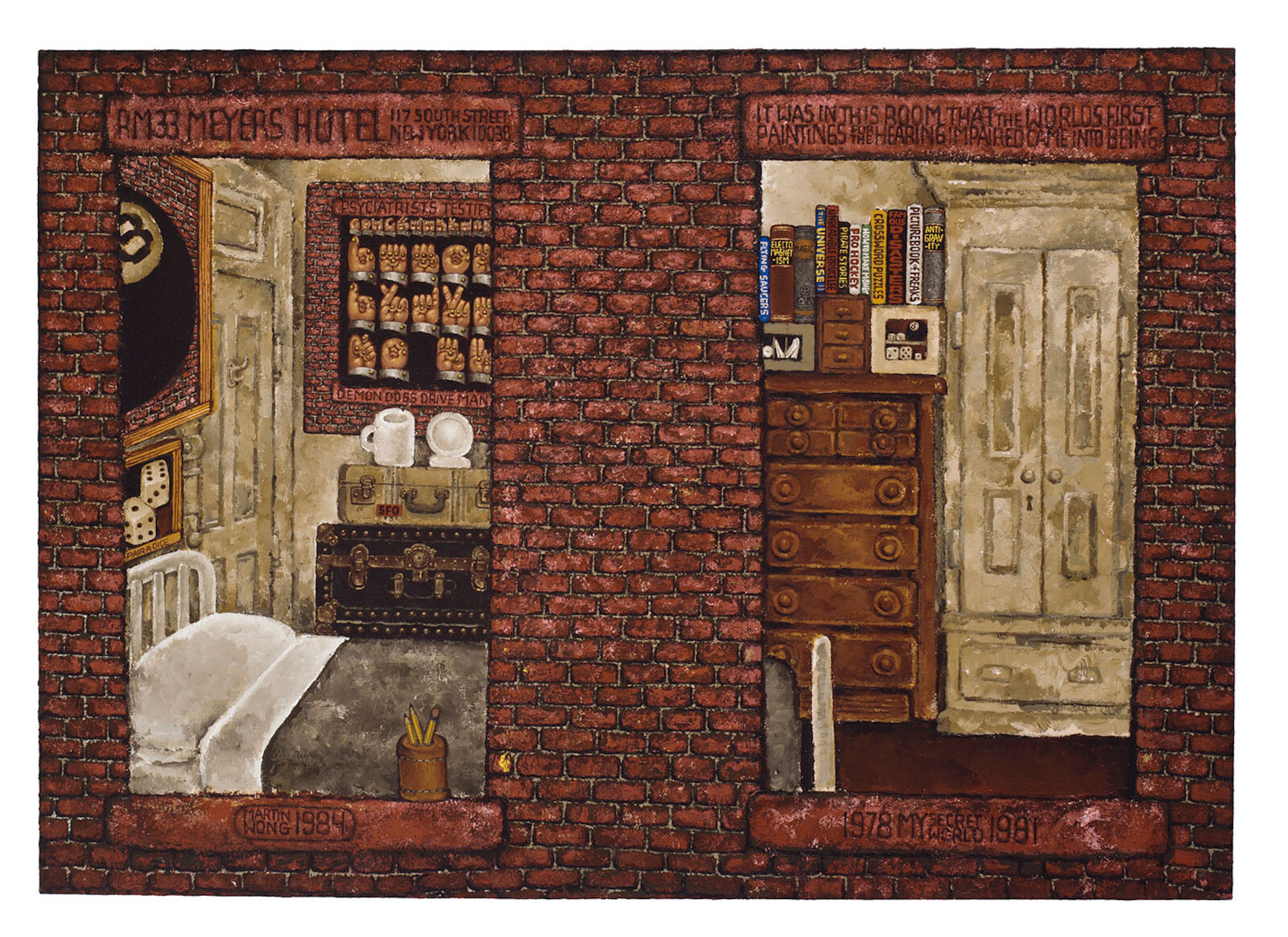Categories
Subjects
Authors
Artists
Venues
Locations
Calendar
Filter
Done
October 24, 2023 – Review
Coco Fusco’s “Tomorrow, I Will Become an Island”
JS Tennant

It comes as no surprise that “Tomorrow, I Will Become an Island” opens with documentation of Coco Fusco’s Two Undiscovered Amerindians Visit the West (1992–94): her justly famous performance with Guillermo Gómez-Peña, staged at the moment the world was tussling over how best to commemorate, or denigrate, the 500th anniversary of Columbus’s so-called “discovery” of the Americas. A prime benefit of the Cuban-American artist’s first major retrospective—curated by Léon Kruijswijk and Anna Gritz—is to be able to trace the arc of suggestive continuities within her impressive thirty-year body of work.
In Two Undiscovered Amerindians, Fusco and Gómez-Peña toured the world in a cage where they were displayed as “natives” of a recently discovered Caribbean island. A subsequent film, The Couple in the Cage: A Guatinaui Odyssey (1993), captures this performance and reactions from the public, its footage intercut with a montage of real-life circus sideshows, world fairs, and racist “ethnographic” dioramas. Attendants, acting as ringmasters, invite passersby to interact with the couple, who speak no English. Bananas are fed to them through the bars; the “female” can be made to dance; five dollars grants a titillating fondle of the “male specimen’s” genitalia. The island’s name, Guatinau, would be pronounced, in …
March 22, 2023 – Review
Martin Wong’s “Malicious Mischief”
Mitch Speed

In a 1988 catalog essay, the poet and critic John Yau sketched out the social dimension of Martin Wong’s painting and sculpture. A self-styled “representative of an economically oppressed urban class consisting largely of Blacks, Hispanics and Asians,” the American artist had been snubbed by curators and critics. A quarter-century after Wong’s death, this injustice has been corrected, and this Berlin retrospective of his antic, steamy, humane, and superlatively accessible take on Chinatown San Francisco and New York, from the 1970s to the ’90s, has been lauded. But there’s an anxiety buried in this enthusiasm. In depicting a disappeared America, Wong’s retrospective holds a mirror to the lost world which surrounds KW itself.
“Even now,” Wong wrote in a hand-calligraphed 1986 press release, “it’s like the moment in these paintings never existed.” His home cities—his subject—were being gentrified to oblivion. In 1984, New York Magazine wrote of Wong’s downtown Manhattan: “nowhere have the tensions and dramas of [gentrification] been more starkly displayed.” Set aside the differences between the cities and eras, and the same has recently been true of Mitte, the Berlin district in which KW is situated.
Nocturne at Ridge Street and Stanton (1987) shows an unpeopled but warm …
April 19, 2022 – Review
Rabih Mroué’s “Under the Carpet”
Jayne Wilkinson

“One of the main weapons is the image itself.” So proclaims Rabih Mroué in his 2018 lecture-performance Sand in the Eyes. With trademark brevity, his statement articulates the complex recurring strategies—analyzing images as weapons, conflating theatricality with war, reading revolutions through pixels—that underlie Mroué’s multidisciplinary projects as a visual artist, actor, playwright, and director. This mid-career survey, surprisingly also his first solo exhibition in Berlin, brings together two decades of work and, incredibly, eight new commissions produced largely during the pandemic.
In design and execution, its ambitions are staggering. A non-linear constellation of video projections, installations, collages, and archival material are structured around a two-story vertical video that can be seen from all corners of the exhibition’s two floors. With so many video and audio works, the sound bleeds (a plinky xylophone suggestive of a film score’s anxious denouement, punctuations of gunfire and explosions that arrive unexpectedly, the noisy insistence of a film projector) effectively recall the sonic chaos of war while still creating an integrated audio environment.
The imposing central work, Images Mon Amour (2021), loops through imagery culled from Lebanese newspapers, with the benday dots of analog print enlarged and visible. Weaponry, …
June 11, 2011 – Review
"based in Berlin"
Michèle Faguet

As the debate over the alleged mishandling of the mysterious E. coli outbreak in Germany raged on in the local and international press, Berliners had their own little controversy to distract themselves with: the opening of the mega-exhibition “based in Berlin,” warily anticipated (and even boycotted) by many members of the local art community distrustful of the motives behind the project’s conception. First presented in October 2010 as a Leistungsschau (showcase) of the much-touted contemporary art scene in Berlin, this survey exhibition was headed up by Christine Macel, Hans Ulrich Obrist, and Klaus Biesenbach as the first step in a long-term initiative to eventually establish a permanent Kunsthalle in Berlin—a decades old issue that has become a significant part of the political agenda of Mayor Klaus Wowereit (of “poor but sexy” fame).
Protests were quick to follow the open-call for artists in Berlin to submit their portfolios, and soon thereafter a group of young “under-curators” (Angelique Campens, Fredi Fischli, Magdalena Magiera, Jakob Schillinger, Scott Cameron Weaver) were appointed to run around town doing the dirty footwork, hopping from studio to studio in a huff-and-puff attempt to get this (vaguely defined) show off the ground. A series of heated discussions hosted by …
